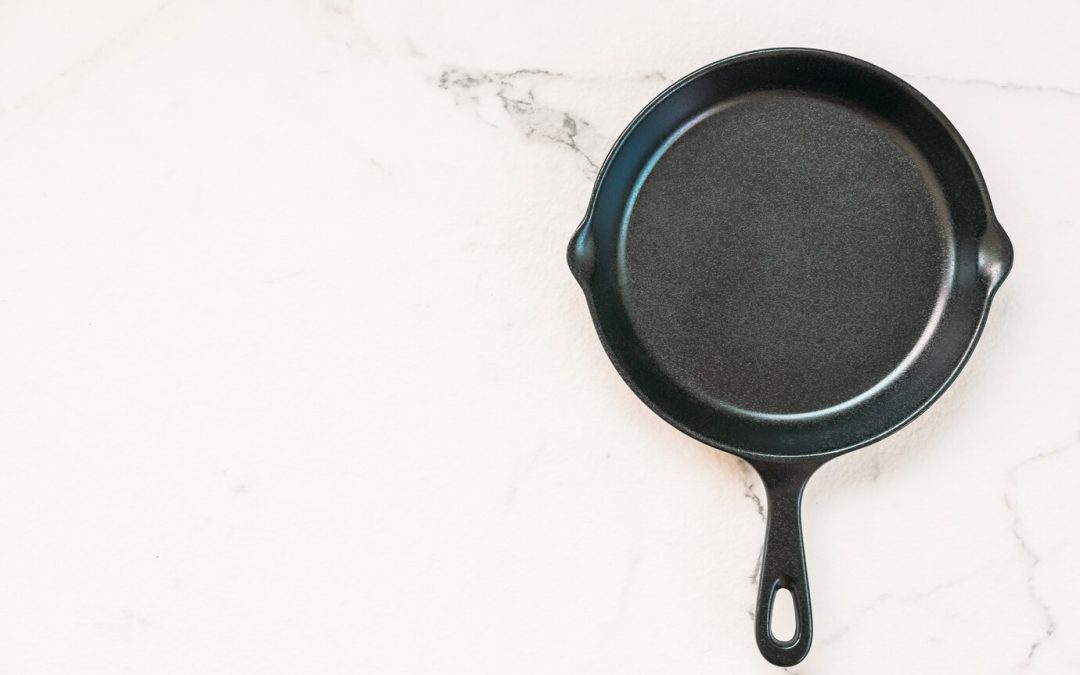Cleaning a cast-iron skillet is an art one needs to know, for any great lover of cooking in this timeless, versatile cookware. Anyone who knows their way around the stove values cast-iron skillets because they are durable and retain heat well, hence favorable in kitchens across the globe. However, while cleaning, there are specific steps to be followed so that it does not lose its non-sticky surface and rust. This proper care will let your skillet be in perfect condition for many years. Understanding how to clean cast iron skillet means understanding how to maintain its seasoning while it’s ready for your next culinary escapade.
Follow the below given instructions if you want to know about some effective techniques through which you can clean cast iron skillets easily.
How to clean cast iron skillet
1. Clean While It’s Still Warm
Cleaning your cast-iron skillet immediately after use, while it’s still warm, helps a great deal when trying to remove particles of stuck-on food. Start by:
- Rinse the skillet with warm water.
- Scrubbing off food particles with a stiff-bristle brush or sponge.
Avoid : using soap on the skillet except when necessary, as it will take off the seasoning.
2. Use Coarse Salt for Stubborn Food Residue
But sometimes the tough food doesn’t want to go; learning how to clean cast iron skillet effectively means learning about natural abrasives. Here’s what you can do:
- Put the lot of coarse salt to the skillet.
- Bush the surface by a paper towel or scrub brush.
- Wash the skillet under warm water, making assured you take off all of it; then dry it completely.
This is a very effective method for lifting stubborn residue without chipping the seasoning.
3. Re-Season Your Cast Iron Skillet
Over time cleaning will remove the seasoning. To re-season:
- Smear the surface of this skillet with a thin layer of vegetable oil or flaxseed oil.
- Place the skillet upside down in a preheated oven at 375°F (190°C) for one hour.
- Let it cool down completely in the oven.
The process tempers the non-stick layer and does not allow rusting.
4. Avoid Soaking and Dishwashers
Cast iron skillets rust if left in water or put in a dishwasher. Always make sure:
- Quick cleaning and drying after each use.
- Followed by proper drying either on the stovetop or with a towel.
5. Store It Properly
It is recommended to store your iron skillet properly. Retain your cast iron skillet in a dehydrated place where it does not have the probability of accretion of moisture. You should also place a paper towel inside so that excess moisture may be absorbed.
Why Proper Cleaning Matters
how to clean cast iron skillet bears directly on its performance and how long it will last. Unlike other cookware, the more use cast iron skillets get, the better they become, since with time they tend to develop a unique value patina. This seasoning layer makes the skillet naturally non-stick and gives food a characteristic flavor. Poor cleaning practices, with their harsh chemicals, or leaving the skillet wet, can damage this layer and lead to its rust and lesser efficiency.
Cleaning a cast-iron skillet involves understanding that this piece of cookware is different from a non-stick or stainless steel pan, so every cleaning becomes a delicate process in removing particles without removing the seasoning. If properly maintained, it can become an heirloom piece and something worth owning in any kitchen.
Steps for Cleaning After Cooking
Allow the cast-iron skillet to cool down some after use but do not let it sit in lingering food residue. Immediately, rinse the pan under running warm water. Take a soft, stiff-bristled brush or a non-abrasive sponge to remove the stuck bits. Do not use dish soap, as it removes this seasoning. Small quantities of mild soap do little harm when absolutely necessary.
If some food particles remain in the skillet, sprinkle some coarse salt into the skillet and rub with it as an abrasive. This often is quite good for removing stubborn residue without damaging the surface of the skillet. Then, rinse it off thoroughly and dry it completely; water left on the skillet may cause rust. Knowing how to clean cast iron skillet makes sure your cookware stays in great shape.
Restoring the Seasoning
Sometimes your skillet needs a little more TLC to get it back in old non-stick form. If the seasoning seems a little dull or patchy after cleaning, place a thin coating of vegetable oil or flaxseed oil in the warm skillet. Wipe off excess oil with a paper towel, using just a very thin coat.
Then rest the skillet on the stovetop or in a low-temperature oven for some minutes to allow the oil to bond with it.
What’s more, re-seasoning is part of the process on how to clean a cast iron skillet. It not only recovers the non-stick properties but also enhances the strength in resisting rust and corrosion of the skillet, thus paving the way for regular maintenance that keeps your skillet always in top shape, so that it is a trusted tool for every cooking task.
Dealing with Rust
Even when a cast-iron skillet is well taken care of, sometimes rust can set in-most likely if it has been exposed to moisture for too long. This isn’t the end of the world, since one can get the rust off with some elbow grease. Remove the rust using a scrubber or fine steel wool, taking care not to press too hard. Once the rust has been removed, wash the skillet thoroughly and dry it at once. Re-season it with a fresh layer of oil.
Learning how to clean cast iron skillet involves being well-versed in the ways of handling rust effectively. The sooner you handle the rust, the sooner you re-season it to its former glory and make it a permanent fixture in your kitchen.
Avoid Common Mistakes
Care is where damage may happen to your cast-iron skillet because some mistakes are made. Never put your skillet in the dishwasher, for high temperatures and detergents will strip it of seasoning and lead to rust. Also, avoid soaking the skillet in water, because this soften its surface after a long time with moisture.
Using metal utensils on an unseasoned skillet will scratch it. Being this tough, even cast iron will wear out if constantly scratched by metal or hard utensils; hence, the use of only wood or silicone-coated utensils is very advisable. These simple tips are part of mastering how to clean cast iron skillet and keep it in pristine condition.
Longevity Day-to-Day Care
Besides cleaning after each use, Cast iron skillets need to be stored correctly. Ensure the skillet is completely dry before storage, as even a little moisture can create rust. Store it in a cool, dry place, and consider placing a paper towel or even a cloth between stacked pans to prevent scratching. Owning a skillet that sees frequent use requires a quick oiling after every couple of uses, so the seasoning is maintained and the performance thereof is amplified. Understanding how to clean cast iron skillet is also about routine maintenance so that your skillet stays ready for all your cooking escapades.
Conclusion
There is some specific knowledge required when it comes to how to clean cast iron skillet so as to keep up with its functionality and durability. The proper ways, which include only rinsing it with warm water, avoidance of harsh chemicals, and the need for re-seasoning if necessary, can ensure that your skillet is in good condition for quite a long time. Caring for your skillet not only keeps it a trusted cooking companion but can also add a potato’s richness in flavor to the pan. With the appropriate treatment, your cast-iron skillet can turn into one which you will value for many years to come











